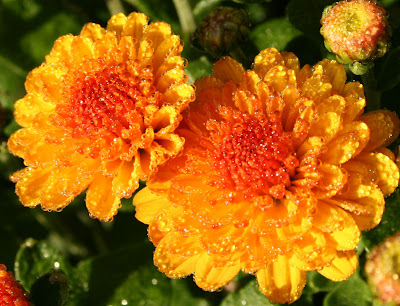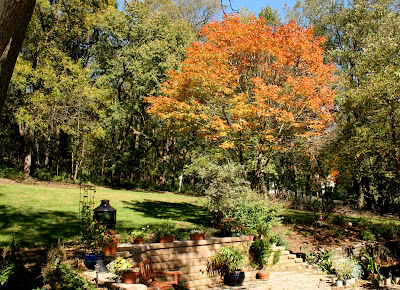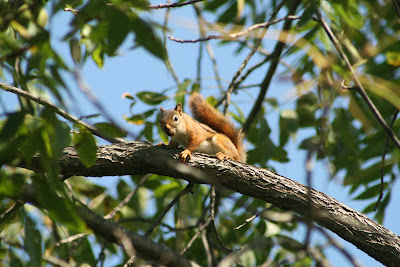This monarch butterfly chrysalis was hanging from the top tier of our trellis. This is first ever chrysalis I have found in the "wild". I think it is literally too little too late. :-( As far as I have been able to find out, monarchs do not overwinter as chrysalises at this latitude. The butterflies actually migrate south from here all the way to Mexico to overwinter as adults. In spring they begin to migrate north again and lay eggs along the way, caterpillars hatch and mature, and butterflies fly farther north, going through several generations before they reach our area. I think time has run out for this little chrysalis because we will have our first freeze of autumn Saturday night.

I took my camera with me work today to take some pictures from the 12th floor of the building where my office is. I wanted to capture some of autumn colors of the trees. You can see we are just getting started with the colors. I hope I will have more later as the colors intensify. I believe these are mostly maple trees that are showing color so far.
The day was so beautiful that I decided to walk partway home and took my camera with me. Along the way, I took this picture of the sun low in the sky backlighting this goldenrod seedhead.
I arranged for Dennis to pick me up on his way home at our favorite cheese shop where we bought some nice cheeses and a fresh French baguette to have for our dinner along with some of the wine that we bought at our visit to the nearby winery a couple of weeks ago. A nice way to end our day and only one more work day to go until the weekend.












































